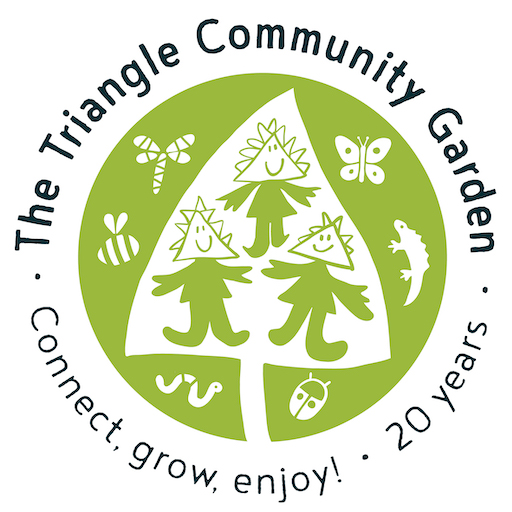Garden Committee member Nic Wilson gives us an insight into the pleasures and practicalities of growing fruit in small spaces:
This week the four rows of apple cordons in the Triangle Community Garden are covered in blossom, looking fresh and frothy, surrounded by deep purple honesty and pale blue forget-me-nots. Trained fruit trees are ideal for growing a large number of varieties in a relatively small space. Many forms are suitable for small gardens, including cordons (with the trunk at 30-45 degrees), espaliers (a central trunk with tiers of horizontal branches), fans (a short trunk with branches radiating out on each side) and step-overs (a low-growing hedge, like an espalier with one low tier).
Fruit trees have been trained in this way for hundreds of years and in Victorian walled kitchen gardens it was common to train apples, pears, plums, cherries and other fruit trees. Recently such methods of fruit growing have undergone a revival in popularity as people have become involved in developing the productivity of small gardens. The community garden is an ideal place to see how productive mature cordons can be and how spectacular their blossom is en masse.
To grow your own cordon it is best to start with a feathered maiden (a young fruit tree – usually in its first year after grafting – with branches along its length) on a dwarfing rootstock (‘M9’, ‘M26’ or ‘MM106’ and ‘Quince A’ or ‘Quince C’ for pears). Apple varieties should be spur-bearers rather than tip bearers so they will produce fruit on short spurs along the length of the cordon and ideally it should be planted near to another apple in the same or an adjacent pollination group to ensure a good crop. The tree is planted 15cm away from the wall or fence at an angle of 30-45 degrees and trained along a cane attached to the fence, wall or a free-standing frame. As cordons can be planted 70cm apart, it is possible to fit several different varieties into a space of just a few metres.
In April, fruit trees combine both beauty and utility as their blossom unfurls, blooms, falls and fruitlets begin to develop. As in the community garden, trained trees add structure to the garden and are useful to cover unsightly boundary fences throughout the growing season. A thing of beauty in its own right, a trained fruit tree is an ideal plant to fill your spring garden with delicate blossom and your autumn kitchen with fruit.
